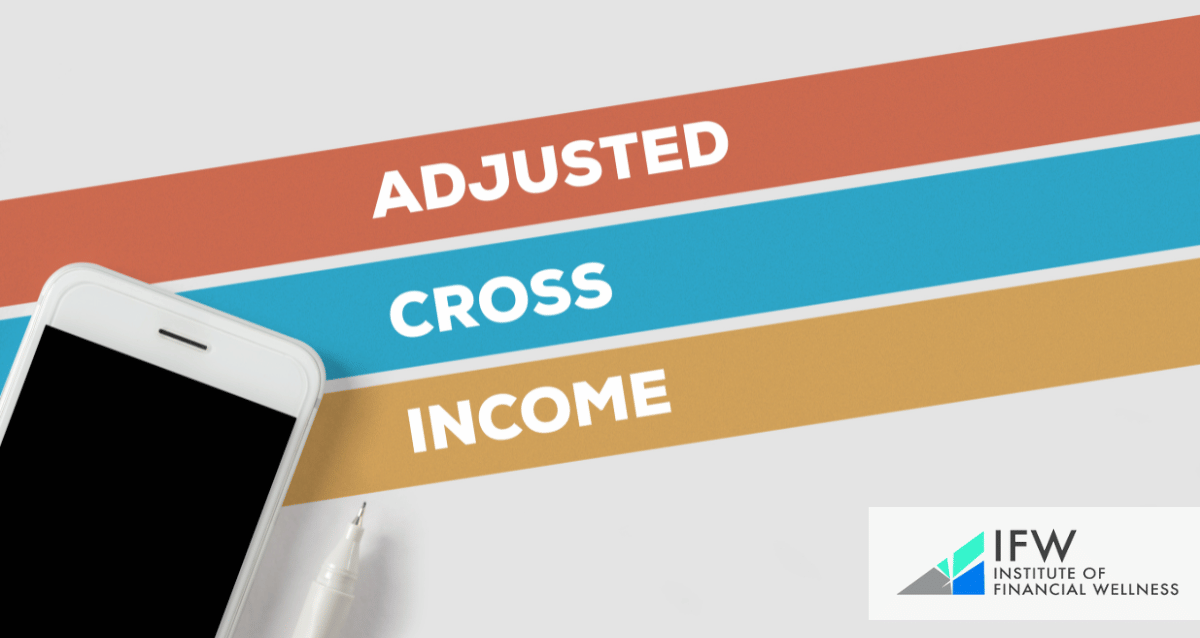“Wealth is not about having a lot of money; it’s about having a lot of options.” -Chris Rock
How to minimize AMT payments? If you have never thought about this before, then it’s time to listen up so you can boost your retirement score.
Diminish your adjusted gross income and leverage tax credits, just as the wealthy do it as a strategy to help reduce overall tax liability and preserve more income for investment or personal use.
Key Takeaways
- The Alternative Minimum Tax (AMT) system recalculates tax liability. This is done by adding back certain items to adjusted gross income, potentially leading to higher tax payments despite regular deductions and exemptions.
- There are several key strategies to reduce AMT liability. Some include lowering adjusted gross income through contributions to retirement and health savings accounts, timing income and deductions strategically, and leveraging applicable tax credits such as the dependent care and foreign tax credits.
- Managing investment income is crucial to avoiding or minimizing AMT liability. This includes strategies like timing the realization of capital gains and handling incentive stock options to minimize their AMT impact.
The Alternative Minimum Tax (AMT): What You Need to Know

Since 1969, the Alternative Minimum Tax (AMT) has been in place to make sure that wealthy individuals pay their fair share of taxes. It’s a backup system to the regular tax code, ensuring the rich can’t dodge taxes using too many breaks and deductions.
Initially, the AMT targeted only the super-rich. However, over time, it’s started to affect more people. Changes from the Tax Cuts and Jobs Act have adjusted who gets exemptions and at what levels.
Understanding how the AMT works is key to managing your taxes effectively. It impacts your personal finances and determines which tax breaks you can use.
Understanding the Basics of AMT

Navigating taxes can be tricky, especially with the Alternative Minimum Tax (AMT) in play. This parallel tax system recalculates what you owe by adding back certain items to your income, even if you’ve claimed deductions elsewhere.
Although recent changes have lessened its impact, the AMT remains significant. Knowing how exemptions and phase-outs affect your tentative minimum tax (TMT) is crucial, especially when it exceeds your regular tax bill.
Mastering these aspects is key to smart financial planning in our dual-tax system.
Key Strategies to Reduce AMT Liability

Navigating the complexities of the Alternative Minimum Tax (AMT) requires careful planning and savvy financial choices. Key tactics to reduce your AMT liability include:
- Lowering your income
- Timing when you earn and deduct money
- Taking advantage of applicable tax credits
Implementing each strategy is crucial to a comprehensive plan aimed at lessening the AMT’s impact on your finances.
How can you maximize these tactics? You need to delve into them thoroughly and understand how to apply them effectively within this dual tax framework.
Lowering Adjusted Gross Income (AGI)

But there’s still more smart planning to be done, and this tip is about starting your calculation by using your adjusted gross income (AGI) as a baseline. Tactics that decrease your AGI can be a game-changer in lowering your AMT liability.
Boosting contributions to retirement plans like 401(k)s or claiming allowable deductions as an independent contractor are powerful ways to shrink your AGI.
Remember, contributing pre-tax funds to health savings accounts and flexible spending accounts can also slash your AGI, potentially reducing your AMT burden. These maneuvers are key to managing your taxes effectively within the AMT framework.
Timing of Income and Deductions

Did you know that arranging income recognition and scheduling deductions strategically can significantly lower your Alternative Minimum Tax (AMT) obligations? Yes!
For instance, delaying year-end bonuses or other income until the next tax year can prevent triggering AMT liability. Conversely, rushing to claim deductions may backfire if you’re under AMT constraints, as certain write-offs like state and local taxes aren’t allowed.
Therefore, precise timing is crucial. It involves carefully assessing your annual tax situation to strike a balance that minimizes your exposure to AMT effectively.
Maximizing Tax Credits

There’s still much to uncover when dealing with the Alternative Minimum Tax (AMT), such as understanding the nuances of tax credits. While some deductions may be restricted, certain tax credits can lower both your regular tax and AMT obligations.
Nonrefundable personal credits, like those for dependent care and foreign tax credits, fall into this category.
If you’ve paid AMT in the past, future tax benefits could be realized through credits such as the AMT foreign tax credit. To make the most of these opportunities, consulting with a tax advisor is recommended.
They can help you navigate these complexities and maximize your potential returns.
Managing Investment Income to Avoid AMT

Investing wisely can be tricky when it comes to the Alternative Minimum Tax (AMT), as certain types of investment income might increase your AMT liability. However, adding municipal bonds that are AMT-exempt to your portfolio can help you sidestep these extra taxes.
To effectively minimize AMT impact, it’s crucial to dive deeper into your investment strategy. Understanding the details around capital gains and how incentive stock options (ISOs) can influence your AMT is essential.
Both can significantly affect your potential AMT liability, so be sure to use a well-thought-out approach.
Handling Capital Gains

Big capital gains can phase out your AMT exemption and increase your tax bill. To manage this, timing is everything.
Spreading out your capital gains over different years can help control your AMT exposure.
Therefore, when planning to sell assets, especially during high-income years, it’s crucial to time these sales carefully. This strategy can effectively manage the potential tax impacts and keep your AMT under control.
Incentive Stock Options (ISOs)

It’s time to discuss incentive stock options (ISOs) because they can be a big part of your pay package. The downside is that exercising them without a plan can lead to a hefty Alternative Minimum Tax (AMT) bill.
To avoid this, keep the difference between the market value and the strike price low and plan carefully when to exercise and sell your ISOs. This strategy can reduce the adjustments required for AMT and ease cash flow pressures.
Exercising ISOs early in the financial year can be beneficial. However, it’s crucial to consider how this interacts with AMT phaseout thresholds.
Mismanaging this can boost your effective tax rates significantly, so be sure to always navigate these decisions with an eye on AMT impacts to keep your taxes manageable.
Deductions and Preferences Under AMT
When it comes to deductions and preferences, the Alternative Minimum Tax (AMT) plays by different rules compared to the regular tax system. Many deductions that lower your taxes under the regular system are limited or not allowed at all under AMT.
For example, certain interest and income exclusions must be added back to your taxable income, potentially increasing your AMT liability.
Let’s dive into how some common deductions and preferences are treated under AMT:
- State and Local Taxes: Under AMT, you can’t deduct state and local taxes. If you usually itemize these deductions, you’ll need to include them back in your AMT calculation, which can raise your AMT bill.
- Miscellaneous Deductions: Many miscellaneous deductions that you might use to lower your regular taxes, such as unreimbursed employee expenses, are also not allowed under AMT. This means these deductions don’t help you reduce your AMT liability.
Understanding these differences is crucial because it helps you anticipate how your deductions will be treated and plan accordingly to manage your overall tax burden effectively.
State and Local Taxes

What can we say about state and local tax deductions? Well, they highlight a major difference between the Alternative Minimum Tax (AMT) and the regular tax system.
While you can deduct these taxes under the regular system, they are not allowed when calculating your AMT. This disallowance can be a big deal, especially for people living in high-tax states, as it raises their chances of falling into the AMT category.
For this reason, we will mention a couple of tactics to consider:
- Avoid Prepaying Taxes: Normally, prepaying state and local taxes might seem like a good way to boost your deductions under the regular tax system. However, under AMT rules, since these taxes aren’t deductible, prepaying could unnecessarily increase your AMT liability without providing any benefit.
- Timing and Payment Strategies: Review when you pay your state and local taxes. Paying these taxes when your income is lower can sometimes help you avoid triggering AMT or reduce its impact.
Understanding how state and local taxes interact with AMT can help you make smarter decisions and potentially lower your overall tax burden.
Miscellaneous Itemized Deductions

Under the Alternative Minimum Tax (AMT) rules, many itemized deductions that reduce your taxes under the regular system are off-limits. This includes unreimbursed employee expenses and certain investment-related costs.
If you usually claim large deductions for these expenses, you might face a higher tax burden under AMT.
To manage this, it’s essential to take a close look at your deduction claims and understand how they impact your AMT liability. Here’s how you can strategize effectively:
- Review Your Deductions: Go through your itemized deductions and see which ones are not allowed under AMT. Common deductions like unreimbursed employee expenses and investment costs can’t be claimed under AMT, so understanding their impact is crucial.
- Plan Ahead: If you know you’ll be subject to AMT, consider adjusting how and when you incur these expenses. For example, delaying or spreading out such costs might help minimize their impact on your AMT liability.
- Consult a Tax Advisor: Given the complexity, working with a tax professional can help you navigate these rules and find the best strategies to lower your AMT burden.
By thoroughly examining and understanding your deduction claims, you can better prepare and reduce any potential impacts on your AMT liability.
Calculating Your AMT Liability

You may be wondering how much you owe the Alternative Minimum Tax (AMT). All you need to do is use a special calculation called the Tentative Minimum Tax (TMT) method.
This process adjusts your income by adding back certain deductions and preferences. Here’s a simplified breakdown of how to do it:
- Start with Your Taxable Income: Begin with the taxable income you’ve calculated under the regular tax system.
- Add Back Specific Deductions: Add back deductions that aren’t allowed under AMT rules, like state and local taxes, certain interest, and miscellaneous deductions. This gives you your alternative minimum taxable income (AMTI).
- Subtract the AMT Exemption: Subtract the AMT exemption amount from your AMTI. The exemption amount can vary based on your filing status and income.
- Apply the AMT Rates: Apply the AMT tax rates (26% and 28%) to the amount remaining after the exemption. This calculates your Tentative Minimum Tax (TMT).
- Compare with Regular Tax: If your TMT is higher than your regular tax liability, you owe the difference as AMT. This means you’ll pay the regular tax amount plus the extra AMT.
For example, if your regular tax liability is $15,000 and your TMT is $18,000, you will owe an additional $3,000 in AMT.
Understanding this calculation can help you see how the AMT might affect you and prepare for any additional taxes you may owe.
Using Form 6251

Since you’re already thinking about your taxes, Form 6251 helps figure out if you owe Alternative Minimum Tax (AMT), which is especially crucial for married couples filing jointly. It adjusts your income, applies exemptions, and calculates your tentative minimum tax.
By comparing this with your regular tax using Form 6251, you’ll know if AMT applies to you. It’s important to fill out this form carefully if AMT might affect you.
Software Tools for AMT Calculation

If you have gotten this far, then you may be wondering if there’s any way to make things simpler. The answer is yes.
Navigating the Alternative Minimum Tax (AMT) can be easier with software tools like TurboTax and H&R Block. These programs simplify the process of calculating both regular tax and AMT, offering guidance along the way.
They make the complex task of determining your AMT liability more understandable, helping you accurately assess what you owe.
Long-Term Planning on How to Minimize AMT

Planning ahead strategically is key to reducing your risk of facing the Alternative Minimum Tax (AMT). By forecasting your income, expenses, and deductions over several years, you can align your tax strategy to minimize both regular income tax and AMT.
Therefore, we advice you take a proactive approach for optimizing your tax situation. This might include spreading income over different periods, maximizing deductible expenses, and staying updated on changes in tax laws.
Year-Round Tax Planning

How to effectively minimize your AMT liability? it’s crucial to use a year-round, comprehensive tax planning approach.
This includes managing when you receive income and when you take deductions and consulting with a tax expert who can create strategies tailored to your financial situation.
Regular discussions with a tax consultant empower you to make informed decisions and take intentional steps to lower your risk of facing the Alternative Minimum Tax (AMT).
The Institute of Financial Wellness: Illuminating the Path to Financial Mastery and AMT Understanding

The IFW serves as a beacon for navigating the complex realm of finance and understanding nuances like Alternative Minimum Tax (AMT). It’s a comprehensive multimedia network dedicated to financial education, offering webinars, newsletters, and personalized financial evaluations.
The Institute of Financial Wellness is dedicated to empowering individuals to achieve financial well-being. Their content, curated by respected financial experts, not only educates but also makes learning about finances enjoyable, and you can learn more in our Retirement Webinar, today.
Full Summary
The Alternative Minimum Tax poses unique challenges and requires strategic financial planning to manage effectively. From understanding the basics of AMT and its exemptions to employing strategies that lower taxable income, time deductions, and maximize credits, the path to minimizing AMT liability is multifaceted.
Managing investment income, staying informed on legislative changes, and engaging in year-round tax planning are critical steps to ensure you are not unduly burdened by AMT. While the AMT may seem daunting, resources like the Institute of Financial Wellness can provide the guidance and clarity needed to navigate this and other financial complexities.
Frequently Asked Questions
What triggered the creation of the Alternative Minimum Tax?
In 1969, the Alternative Minimum Tax was established to stop wealthy taxpayers from excessively diminishing their taxable income via tax preferences and guarantee they contribute at least a minimum level of income tax.
How did the Tax Cuts and Jobs Act affect the AMT?
The Tax Cuts and Jobs Act increased the AMT’s exemption and phase-out thresholds. This resulted in a reduction of the number of taxpayers subject to the AMT.
Can I use tax credits to reduce my AMT liability?
Yes, certain tax credits like the dependent care credit and foreign tax credits are used to reduce AMT liability. Additionally, you may be eligible for a minimum tax credit for AMT paid in prior years.
How can I calculate my AMT liability?
Utilizing Form 6251, you can determine your AMT liability by making adjustments to your taxable income and ascertaining the tentative minimum tax. This will indicate whether or not you are responsible for owing AMT.
What are some long-term strategies to minimize AMT?
In order to lessen the long-term effects of the alternative minimum tax, it is advisable to distribute your income and deductions across multiple years. This helps ensure that you remain below the threshold at which AMT exemptions begin to phase out.
Keep abreast of any changes in legislation that could influence how the AMT is determined.
Employing these tactics can serve as a means to mitigate the financial repercussions attributable to being subject to the minimum tax on your earnings.
When does AMT exemption begin to phase out?
The AMT decreased at $1,156,300 for married couples filing jointly and at $578,150 for singles, heads of household, and married couples filing separately [1].
How many people have to pay additional income taxes because their AMT liability surpasses their ordinary income tax?
Each year, several regular individual income taxpayers discover they must recalibrate their income tax obligation under the AMT. Within this category, a smaller subgroup—approximately 5 million in 2017—end up paying additional income taxes because their AMT liability surpasses their ordinary income tax liability [2].
Who does the AMT impact?
Throughout history, the volume of AMT returns and revenue has remained modest compared to the total number of tax filers and revenue generated through individual income tax. Since 1996, the proportion of AMT returns relative to total individual income tax returns has consistently remained below 5 percent, with AMT revenue as a percentage of total individual income tax revenue also consistently below 3 percent [3].




